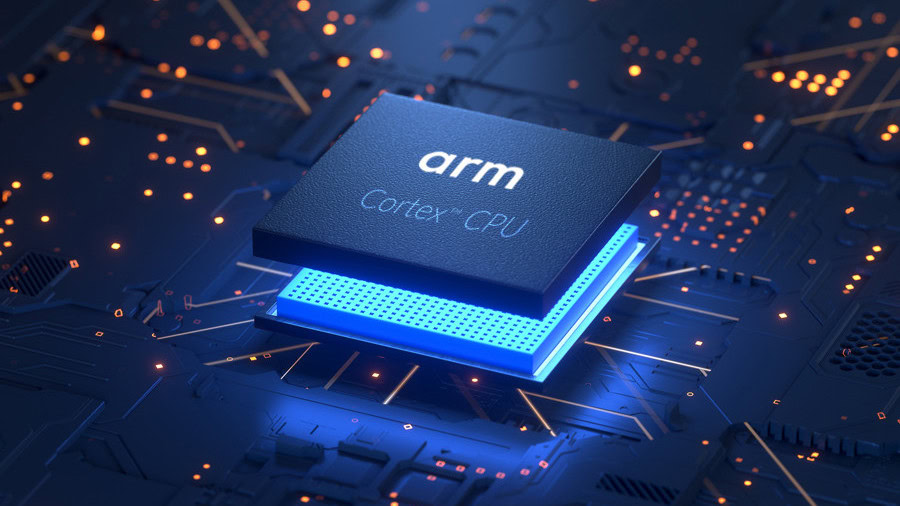Google Tensor vs Snapdragon 888: How the Pixel 6’s chip is shaping up

The phone hasn’t even launched yet, but the prospect of a Pixel 6 series powered by a custom Google Tensor SoC is already raising some big questions. Can the chip catch Apple? Will it really be using the latest and greatest technology around?
Google could have bought chipsets from long-time partner Qualcomm or even purchased an Exynos model from its new friends at Samsung. But that wouldn’t have been nearly as much fun. Instead, the company has worked with Samsung to develop its own chipset using a combination of off-the-shelf components and a little of its in-house machine learning (ML) silicon.
According to a robust report, the Pixel 6’s Google Tensor SoC will look a bit different from other flagship chipsets on the market. Of course, we’ll save benchmarking and any performance and battery verdicts for when we have the device in hand. But we already have plenty of information to dive into an on-paper comparison between the latest chipsets from Qualcomm (and Samsung too while we’re at it). How is the Google Tensor vs Snapdragon 888 chipset face-off shaping up? Let’s take an early look.
Google Tensor vs Snapdragon 888 vs Exynos 2100
Although next-gen SoCs from Qualcomm and Samsung aren’t too far away, the Google Tensor chip is designed to compete with the current-gen Qualcomm Snapdragon 888 and Samsung Exynos 2100 flagship chipsets. So we’ll use these as the basis for our comparison.
| Google Tensor | Snapdragon 888 | Exynos 2100 | |
|---|---|---|---|
| CPU | 2x Arm Cortex-X1 (2.80GHz) 2x Arm Cortex-A76 (2.25GHz) 4x Arm Cortex-A55 (1.80GHz) |
1x Arm Cortex-X1 (2.84GHz) 3x Arm Cortex-A78 (2.4GHz) 4x Arm Cortex-A55 (1.8GHz) |
1x Arm Cortex-X1 (2.90GHz) 3x Arm Cortex-A78 (2.8GHz) 4x Arm Cortex-A55 (2.2GHz) |
| GPU | Arm Mali-G78 (854MHz) | Adreno 660 | Arm Mali-G78 MP14 (854MHz) |
| RAM | LPDDR5 | LPDDR5 | LPDDR5 |
| ML | Tensor Processing Unit | Hexagon 780 DSP | Triple NPU + DSP |
| Media Decode | H.264, H.265, VP9, AV1 | H.264, H.265, VP9 | H.264, H.265, VP9, AV1 |
| Modem | 4G LTE 5G sub-6Ghz & mmWave 7.35Gbps download 3.6Gbps upload (integrated Exynos 5123) |
4G LTE 5G sub-6Ghz & mmWave 7.5Gbps download 3Gbps upload (integrated Snapdragon X60) |
4G LTE 5G sub-6Ghz & mmWave 7.35Gbps download 3.6Gbps upload (integrated Exynos 5123) |
| Process | 5nm | 5nm | 5nm |
As we’d expect given the nature of their relationship, Google’s Tensor SoC leans heavily on Samsung’s technology found in its latest Exynos processor. According to the report, the modem and GPU setup are directly borrowed from the Exynos 2100, and the similarities extend down to similar AV1 media decoding hardware support.
If the GPU setup indeed matches Samsung’s Exynos 2100, then the Pixel 6 will be a decent gaming phone too, albeit still a few frames behind the Snapdragon 888’s graphics capabilities. Still, that will be a relief for those hoping for proper flagship tier performance from the Pixel 6. However, we’re anticipating that the chip’s Tensor Processing Unit (TPU) will offer even more competitive machine learning and AI capabilities.
Read more: Snapdragon 888 vs Exynos 2100 tested
The Google Tensor SoC appears competitive across CPU, GPU, modem, and other technologies.
Google’s 2+2+4 CPU setup is a more odd design choice. It’s worth exploring in more detail, which we’ll get to, but the prominent point is that two powerhouse Cortex-X1 CPUs should give the Google Tensor SoC more grunt for single-threads but the older Cortex-A76 cores may make the chip a weaker multitasker. It’s an interesting combination that harkens back to Samsung’s ill-fated Mongoose CPU setups. However, there are big questions to be answered about this design’s power and thermal efficiency.
On paper, the Google Tensor processor and the Pixel 6 series look to be very competitive with the Exynos 2100 and Snapdragon 888 found through some of 2021’s best smartphones.
Understanding the Google Tensor CPU design

Let’s jump into the big question on every tech-enthusiasts lips: why would Google pick 2018’s Arm Cortex-A76 CPU for a cutting-edge SoC? The answer lies in an area, power, and thermal compromise.
I’ve dug up a slide (see below) from a previous Arm announcement that helps visualize the important arguments. Granted the chart’s scale isn’t particularly accurate, but the takeaway is that the Cortex-A76 is both smaller and lower power than the newer Cortex-A77 and A78 given the same clock speed and manufacturing process (ISO-Comparison). This example is on 7nm but Samsung has been working with Arm on a 5nm Cortex-A76 for some time. If you want numbers, the Cortex-A77 is 17% larger than the A76, while the A78 is just 5% smaller than the A77. Similarly, Arm only managed to bring power consumption down by 4% between the A77 and A78, leaving the A76 as the smaller, lower power choice.
The trade-off is that the Cortex-A76 provides a lot less peak performance. Combing back through Arm’s numbers, the company managed a 20% micro-architectural gain between the A77 and A76, and a further 7% on a like-for-like process with the move to A78. As a result, multi-threaded tasks may run slower on the Pixel 6 than its Snapdragon 888 rivals, although that of course depends a lot on the exact workload. With two Cortex-X1 cores for the heavy lifting, Google may feel confident that its chip has the right mix of peak power and efficiency.

This is the crucial point — the choice of the older Cortex-A76s is inextricably bound to Google’s desire for two high-performance Cortex-X1 CPU cores. There’s only so much area, power, and heat that can be expended on a mobile processor CPU design, and two Cortex-X1s push against these boundaries.
Opting for smaller, lower power cores frees up the chip’s silicon, energy, and thermal budget for these bigger components. Alternatively, it could be said that choosing two Cortex-X1 CPU cores forces Google to adopt two smaller, lower power mid-tier cores. But why would Google want two Cortex-X1’s when Qualcomm and Samsung are happy and performing very well with just one?
Read more: Why the Pixel 6’s Tensor chip is actually a big deal (and why it isn’t)
Besides the raw single-threaded performance boost, the core is 23% faster than the A78, the Cortex-X1 is an ML workhorse. Machine learning, as we know, is a big part of Google’s design goals for this custom silicon. The Cortex-X1 provides 2x the machine learning number-crunching capabilities of the Cortex-A78 through the use of a larger cache and double the SIMD floating-point instruction bandwidth. In other words, Google is trading down some general multi-core performance in exchange for two Cortex-X1s that augment its TPU ML capabilities. Particularly in instances when it might not be worth spinning up the dedicated machine learning accelerator. Although we don’t yet know how much cache Google intends to pair with its CPU cores, which will make a difference to their performance too.
Two powerhouse Cortex-X1 cores is a departure from Qualcomm's successful formula that comes with its own pros and cons.
Despite the use of Cortex-A76 cores, there’s still potentially a trade-off with power and heat. Testing suggests that a single Cortex-X1 core is quite power-hungry and can have trouble sustaining peak frequencies in today’s flagship phones. Some phones even avoid running tasks on the X1 to improve power consumption. Two cores onboard double the heat and power problem, so we should be cautious with suggestions that the Pixel 6 will blow past the competition simply because it has two powerhouse cores. Sustained performance and energy consumption will be key. Remember, Samsung’s Exynos chipsets powered by its heavy-hitting Mongoose cores suffered due to this very problem.
Google’s TPU differentiator

One of the few remaining unknowns about the Google Tensor SoC is its Tensor Processing Unit. We do know it’s primarily charged with running Google’s various machine learning tasks, such as voice recognition to image processing, and even video decoding. This suggests a reasonably general-purpose inference and media component that’s hooked into the chip’s multimedia pipeline.
Related: How on-device machine learning has changed the way we use our phones
Qualcomm and Samsung have their own silicon parts dedicated to ML too, but what’s particularly interesting about the Snapdragon 888 is how diffuse these processing parts are. Qualcomm’s AI Engine is spread across its CPU, GPU, Hexagon DSP, Spectra ISP, and Sensing Hub. While this is good for efficiency, you won’t find a use case that runs all these components at once. So Qualcomm’s 26TOPS of system-wide AI performance isn’t used often if ever. Instead, you’re more likely to see one or two components running at a time, such as the ISP and DSP for computer vision tasks.
Google states that its TPU and ML prowess will be the key differentiator.
Google’s TPU will no doubt comprise various sub-blocks, particularly if it’s running video encoding and decoding too, but it seems as if the TPU will house the bulk of if not all the Pixel 6’s ML capabilities. If Google can leverage most of its TPU power all at once then it may well be able to leapfrog its competitors for some truly interesting use cases. But we’ll just have to wait and see.
Google Tensor vs Snapdragon 888: The early verdict
![]()
With Huawei’s Kirin on the backburner, the Google Tensor SoC has thrown some much-needed fresh blood into the mobile chipset colosseum. Of course, we’ll wait until we have the phone in our hands before drawing any conclusions. But on paper, the Google Tensor looks every bit as compelling as the flagship-tier Snapdragon 888 and Exynos 2100.
As we’ve expected all along, the Google Tensor isn’t set to leapfrog current-generation processors. However, it is pursuing its own novel approach to the mobile processing problem. With two high-performance CPU cores and its in-house TPU machine learning solution, Google’s SoC is shaping up to be a little different than its rivals. Although the real game-changer could be Google offering five years of OS updates by moving to its own silicon.
What do you make of the Google Tensor vs Snapdragon 888 and Exynos 2100? Is the Pixel 6’s processor shaping up to be a true flagship contender?
source https://www.androidauthority.com/google-tensor-vs-snapdragon-888-3025332/

Subscribe Our Newsletter

0 Response to "Google Tensor vs Snapdragon 888: How the Pixel 6’s chip is shaping up"
Post a Comment